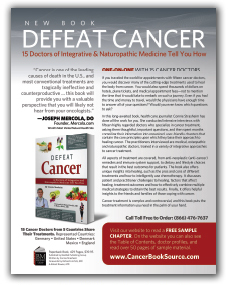Studying nutrition over decades has given me much insight into the subject. One fascinating aspect of this are Food Guides. Did you know they vary from country to country? From one "ideology" to the other?
Food guides are not simply the result of scientific thinking; they are also the product of social, socioeconomic and political constraints. In fact, scientists, the representatives of national agri-food industries, and the politicians who represent citizens' interests’ work together to produce a food guide. There can therefore be conflicts of interest through the promotion of food families that are emphasized more than they should be. Take milk, for example, which is not essential to consumers if they get calcium from other sources.
“Governments must take into account domestic policy constraints when developing food guides: self-sufficiency, agricultural support, population distribution, the promotion of regions and resources, etc. It would be counter-productive to promote a diet – no matter how beneficial it is to health – that would require so many changes to food or cooking habits that it would have little chance of being adopted.” (Passeport santé)
We are going to look at the Canadian, American, and French guides, as well as a Vitality naturopathic food guide and two model guides that have greatly influenced many current food guides: The Willett Food Pyramid and the Zone and Omega-3 diets from Barry Sears.
Canada’s Food Guide (2007 edition)
The general scope of this new guide is similar to the old one in that it outlines four basic food groups: fruit and vegetables, grain products, milk and alternatives, and meat and alternatives. A rainbow is used to illustrate the four groups. Fruit and vegetables now take up the first section to the left.
The recommended servings have changed and servings are now established according to age and sex.
The guide generally recommends that people buy and prepare food with little or no fat, sugar or salt.
It also recommends being active by taking up a physical activity or sport, eating well, looking at food labels, and limiting consumption of Trans fat.
There are specific recommendations given for each food group.
Since the guide does not restrict any food, it can be easily integrated into daily life at home or outside the home. With the wide variety of food it proposes, the guide integrates contemporary cultural diversity and can help you discover new foods with varied flavours and textures. However, this quality of diet can only be obtained if you prepare more meals at home and only use foods that are fresh or unprocessed.
Canada’s new food guide aims to prevent obesity through general measures. The precise number and volume of servings (according to sex and age group) is a step in this direction, particularly because the number of servings of grain products has been reduced and the number of servings of fruit and vegetables has been increased compared to the previous guide.
If you'd like to learn more about the Canadian Food Guice, and others (such as the American Food Guide, the French Food Guide, Willet's Pyramid, the Barry-Sears Diet, the Anti-Aging or Vitality Food Guide, and more), then the
Nutrition Basics course, given by the AMCC will most certainly fulfill all your needs!
Guided hugs,




 Juicing allows us to get the nutrients from vegetables we ordinarily wouldn't eat by themselves or in sufficient quantities. An example of this are dark leafy vegetables. One large salad per day is what most raw foodist will have. But juice a whole pack of spinach, add some celery to that and maybe a carrot or two... Whoah! Now that's adding nutrition to a diet! It's worth making this practice an habitual one.
Juicing allows us to get the nutrients from vegetables we ordinarily wouldn't eat by themselves or in sufficient quantities. An example of this are dark leafy vegetables. One large salad per day is what most raw foodist will have. But juice a whole pack of spinach, add some celery to that and maybe a carrot or two... Whoah! Now that's adding nutrition to a diet! It's worth making this practice an habitual one.  skin problems, blemishes, acne
skin problems, blemishes, acne reduced toxic load
reduced toxic load
 Each chapter of the book focuses on the treatment approach of a single physician. Fifteen physicians were interviewed, so there are fifteen chapters (meet the interviewees). Author Connie Strasheim worked closely with each interviewee, over the course of several revisions, to ensure that their particular chapter was refined, accurate and as complete as possible. This kind of focused, organized information cannot be found anywhere else in print or on the internet.
Each chapter of the book focuses on the treatment approach of a single physician. Fifteen physicians were interviewed, so there are fifteen chapters (meet the interviewees). Author Connie Strasheim worked closely with each interviewee, over the course of several revisions, to ensure that their particular chapter was refined, accurate and as complete as possible. This kind of focused, organized information cannot be found anywhere else in print or on the internet. Factors that affect healing, including finances, lifestyle habits, psycho-emotional stress, past treatments, and co-morbid conditions. Tips are provided for patients with limited financial resources.
Factors that affect healing, including finances, lifestyle habits, psycho-emotional stress, past treatments, and co-morbid conditions. Tips are provided for patients with limited financial resources.


